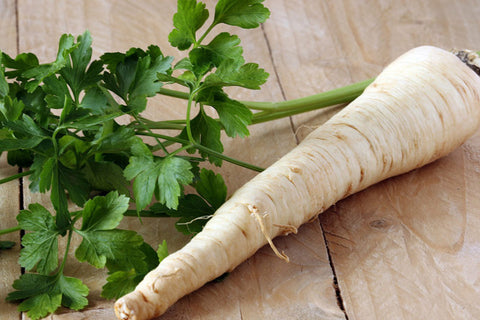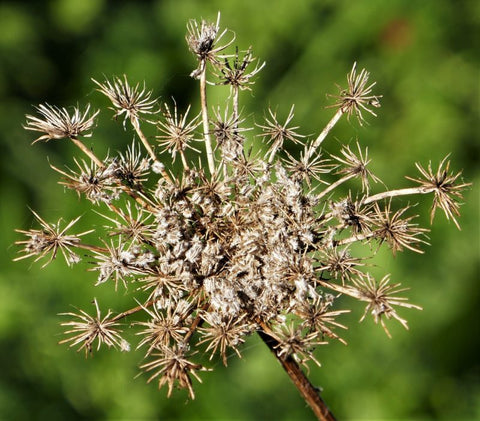If I could choose only one herb for my garden, it would be parsley. Basil might be a close competitor, but considering how effortlessly parsley grows compared to the temperamental nature of basil, parsley takes the lead.
Moreover, parsley is a superfood. It boosts immunity, serves as a potent antioxidant, and is rich in vitamins A, C, and K. Packed with beta-carotene, folate, calcium, and chlorophyll, it's even the richest plant-based source of iron! It's a green multivitamin powerhouse.
Parsley makes a fantastic infused tea for alleviating bloating or indigestion and may aid in kidney and bladder infections. Let's not forget how delightful it is in everything from pasta to salads. Renowned chef James Beard once said parsley is so essential for cooking that it goes without saying.
Varieties of Parsley
Parsley comes in two main types (Petroselinum crispum): curly and Italian. Although both are biennials, most gardeners treat them as annuals due to the leaves becoming tougher and more bitter in the second year.
Curly Parsley

Aphrodite – A vigorous variety with dark green, intensely flavored leaves.
Darki – Even darker than Aphrodite, Darki boasts high levels of essential oils.
Forest Green – Perhaps the most common variety, featuring long, upright stems ideal for easy bunching. Drought-resistant, it remains unlikely to discolor even in sweltering summer heat, reaching a height of 10-12 inches.
Italian Parsley (Flat Leaf)

Flat leaf parsley is sweeter than its curly counterpart and less pungent. Widely available, it requires regular watering to prevent leaves from becoming tough.
Hamburg Parsley

Also known as rooted parsley, Hamburg parsley is the lesser-known sibling in the parsley family, despite being a dual-purpose plant. Both its roots and leaves are edible.
This plant requires more spacing than other parsley types since the roots need room to grow. Harvesting is ready after four months, but don't trim the leaves until you're ready to pull the roots.
How to Grow Parsley
Growing Zones
Parsley thrives in zones 3-9, with the possibility of growing through winter in zone 9.
When to Plant Parsley
Begin indoors six weeks before the last frost date in your area or directly sow seeds in the garden when the soil is workable. For those in hot climates, consider growing parsley as a cool-season annual.
Fill containers with potting soil, lightly covering seeds to a depth of 1/4 inch. Since potted plants lack the same nutrient accessibility as garden ones, fertilize regularly.
Soil Requirements
Parsley prefers nutrient-rich, moist soil. Incorporate plenty of compost or rotted manure before planting in well-draining soil, aiming for a pH level between 5.5-7.
Sun Requirements
Plant parsley in full, direct sun. In areas with high temperatures, provide some shade during the hottest parts of the day.
Spacing
Plant seedlings 6-10 inches apart with 12-24 inches between rows.
Caring for Parsley
Watering
Parsley is quick to bolt to seed if it becomes too dry. It can also turn dry and crispy if deprived of sufficient water. Mulching in drier climates helps retain moisture.
Fertilizer
Ensure the soil is well-fed before planting, and fertilize once a month to promote healthy leaf production.
Weeding
Keep the area around parsley plants free of weeds, which may weave in and out of the loosely formed parsley leaves.
Pruning
Regularly deadhead flowers and snip leaves to encourage new growth.
Harvesting and Using Parsley
Seeds
Allow seeds to mature on the plant, then cut them off at the stem once completely dry. Store in an envelope until the next year.

Leaves
Regularly pick young leaves to maintain a continuous supply. They're perfect in any Italian dish, and flat leaf variety leaves are best torn or roughly chopped, while curly types are better finely chopped and sprinkled on food.

A white sauce with finely chopped parsley is a personal favorite. You can also dry the leaves for use throughout the year in soups and stews. Dry the leaves using a food dehydrator or by hanging them. An alternative method is dipping the sprigs in boiling water for two minutes, then placing them in a very low oven until dry. Crush the dried leaves and store in a glass jar.
Roots
After four months of planting, pull Hamburg parsley from the ground. The roots taste like a combination of parsley and parsnip, suitable for use in salads or stir-fries.
Growing parsley is one of the simpler gardening endeavors. Give it a try; you'll be glad you did. Do you have any tips for those new to growing parsley? Or perhaps some great recipes to share that make the most of your parsley harvest?









